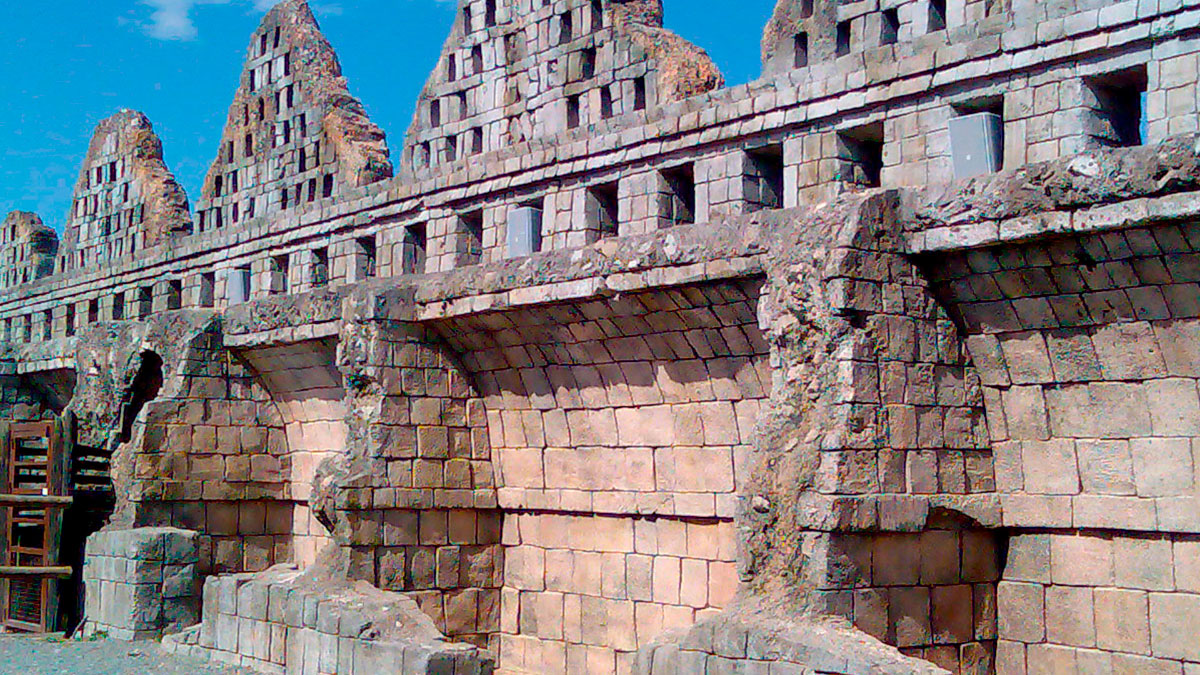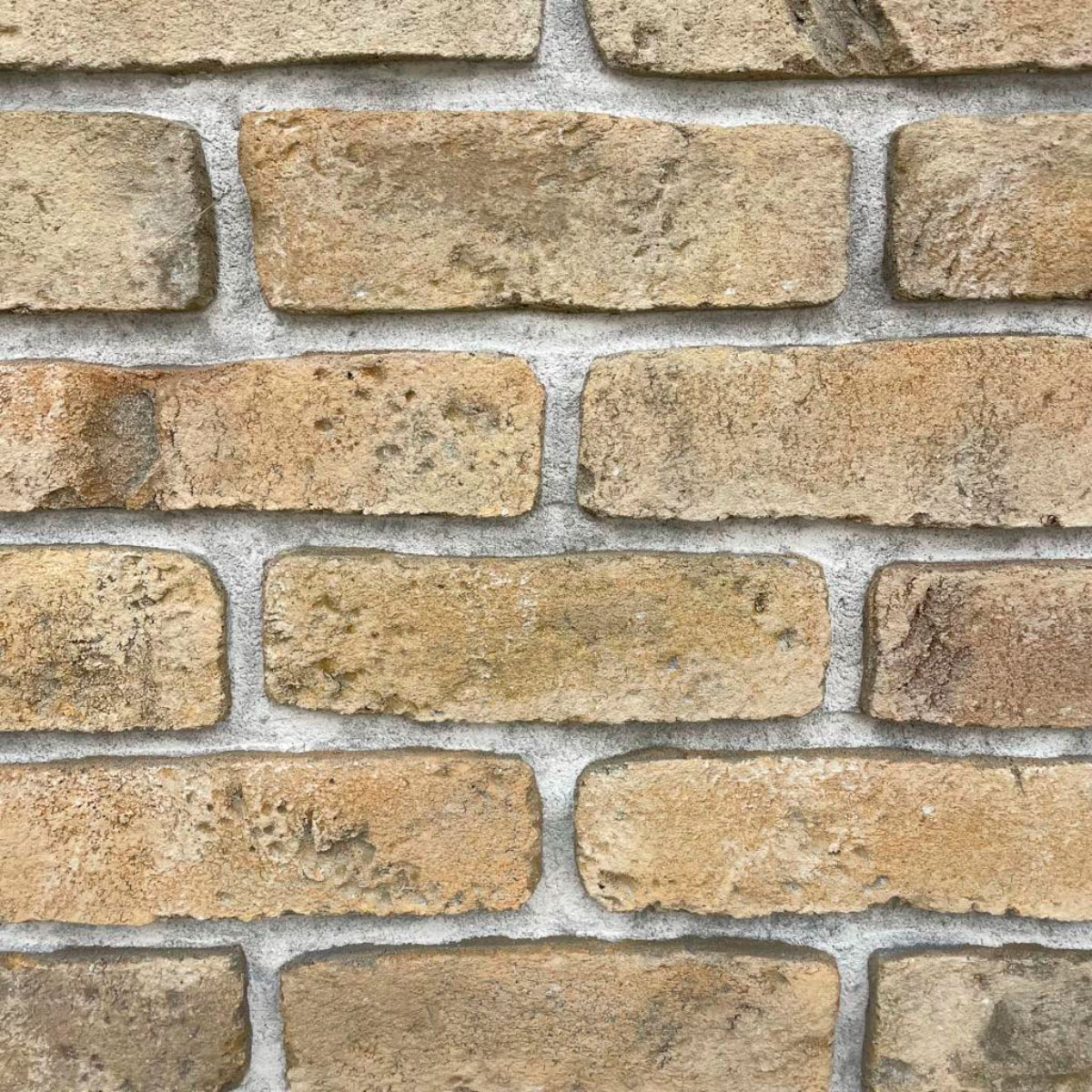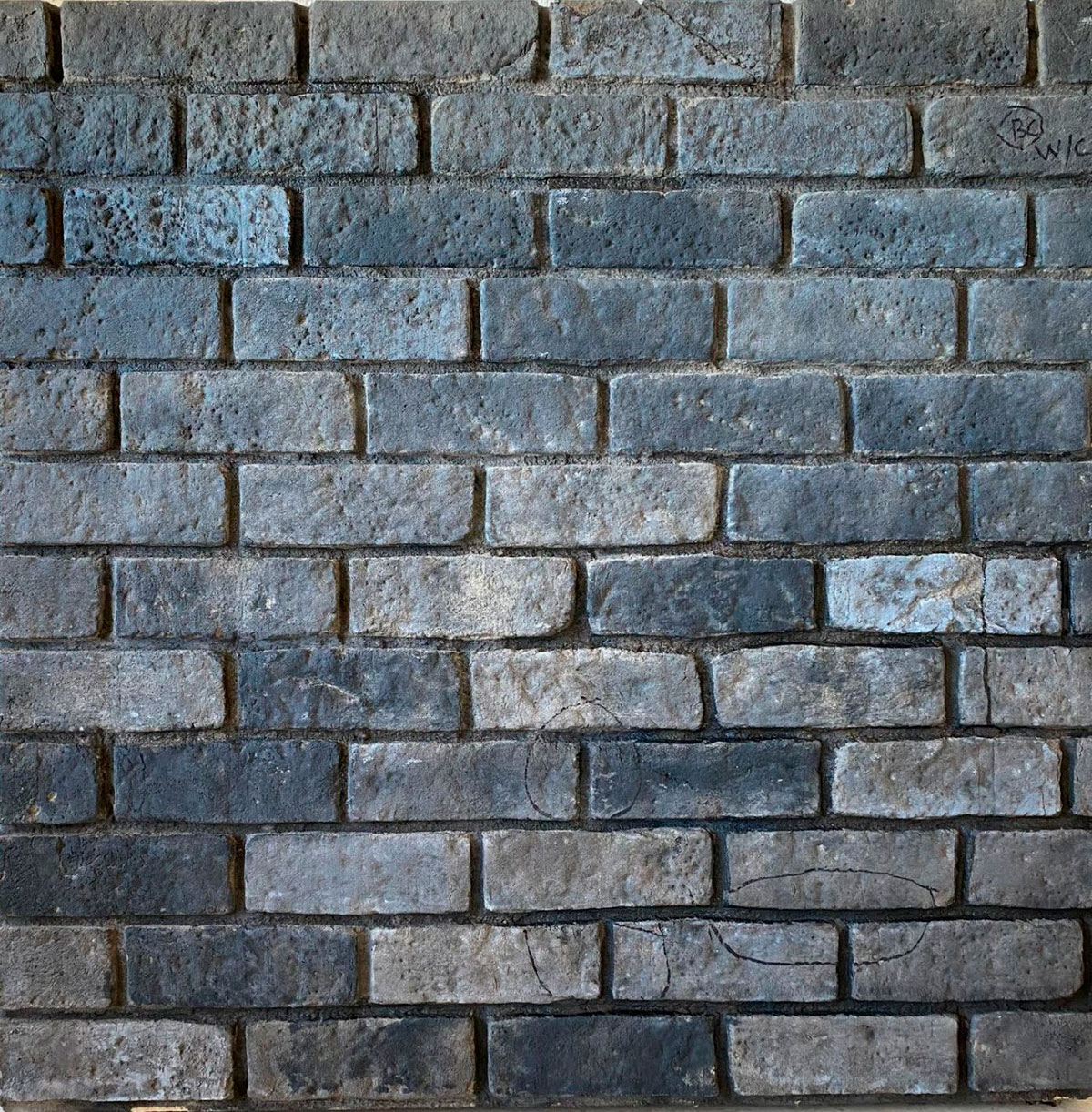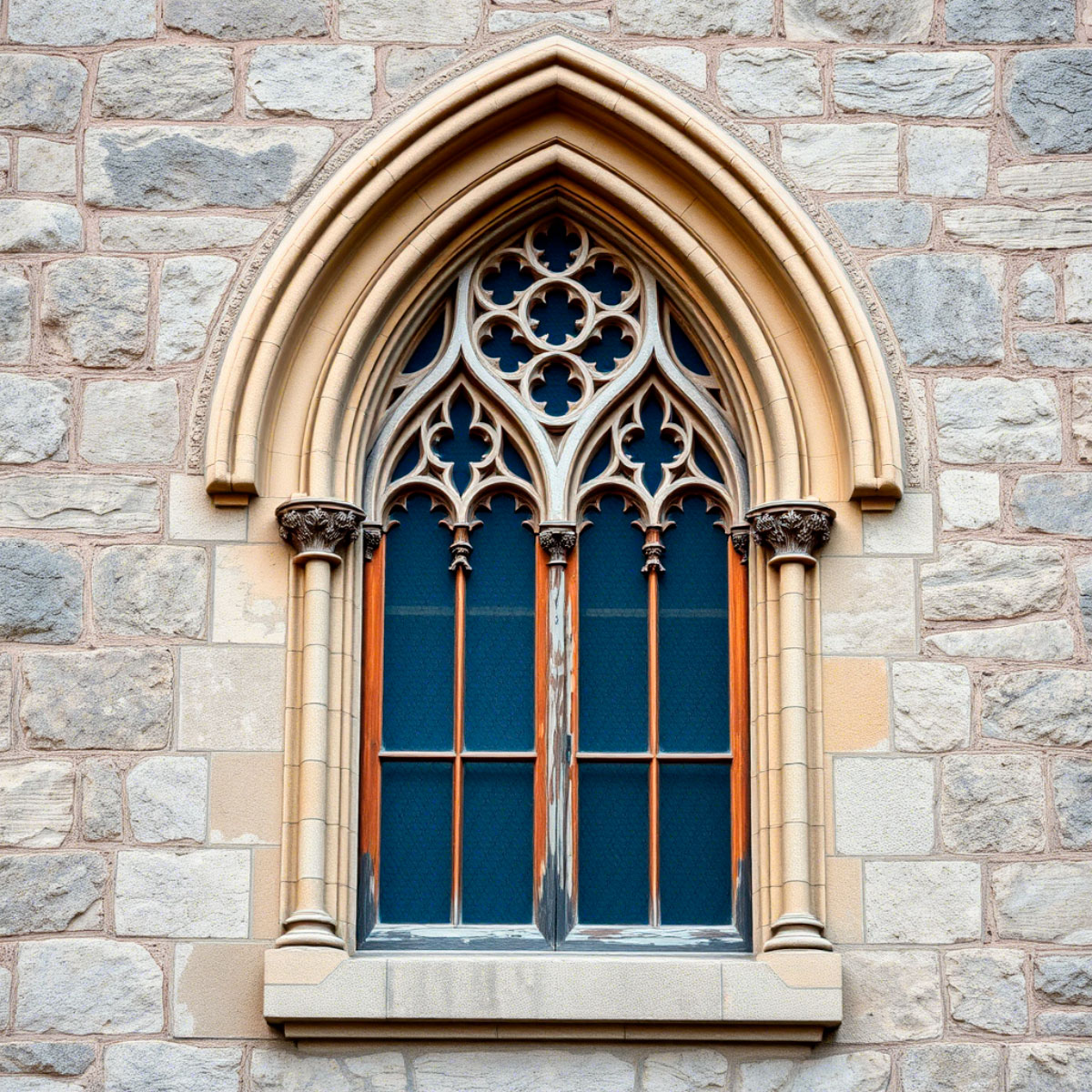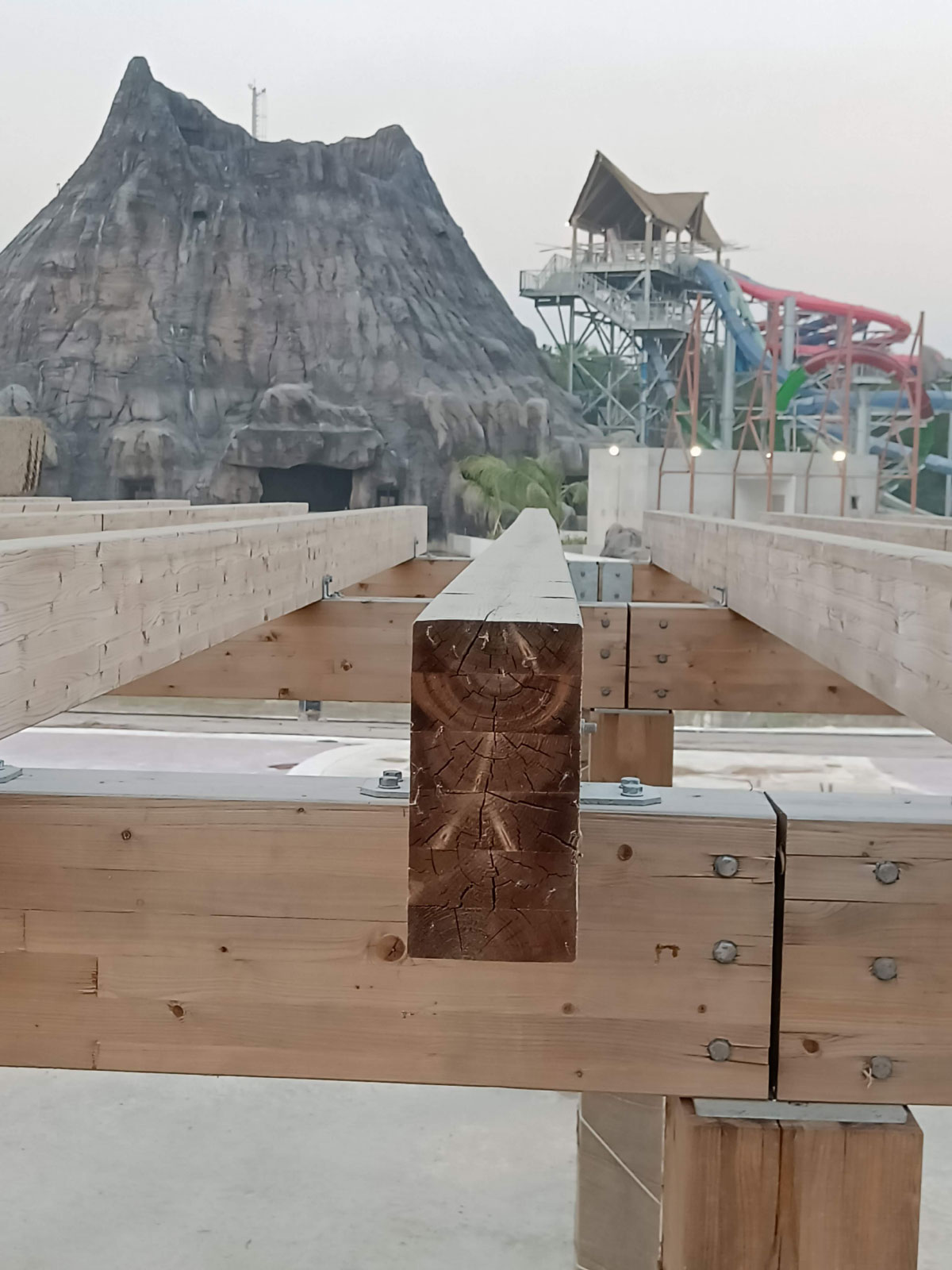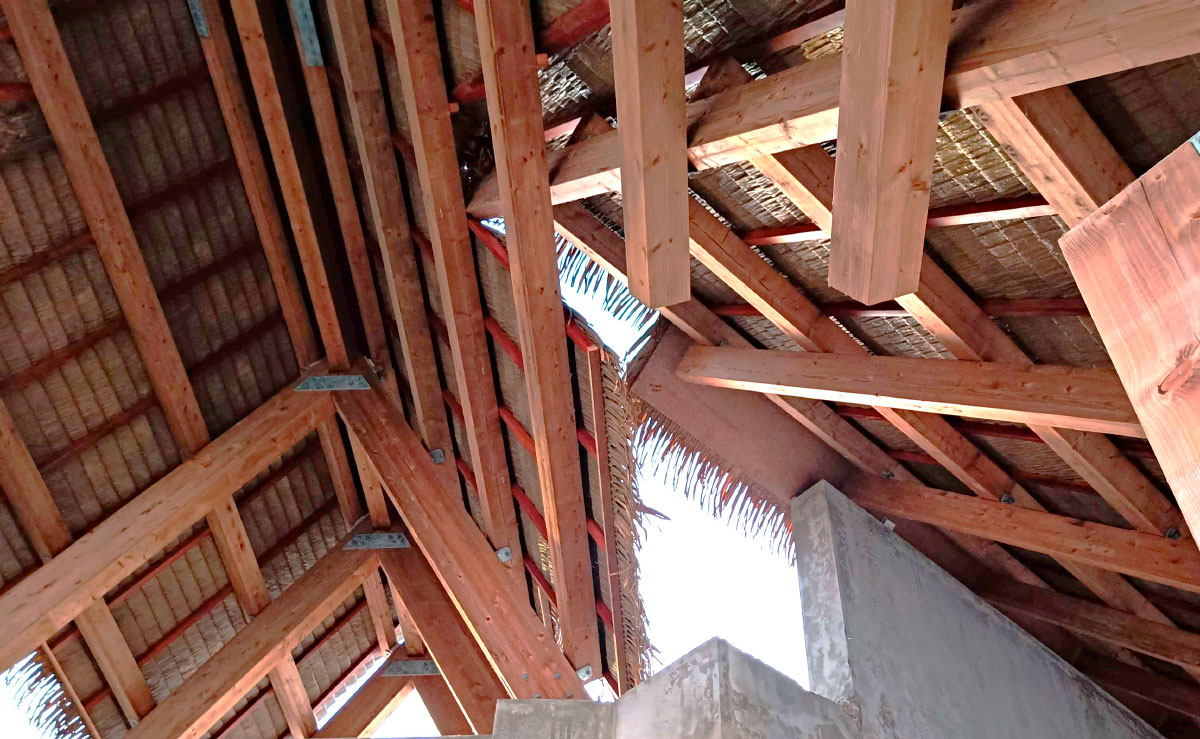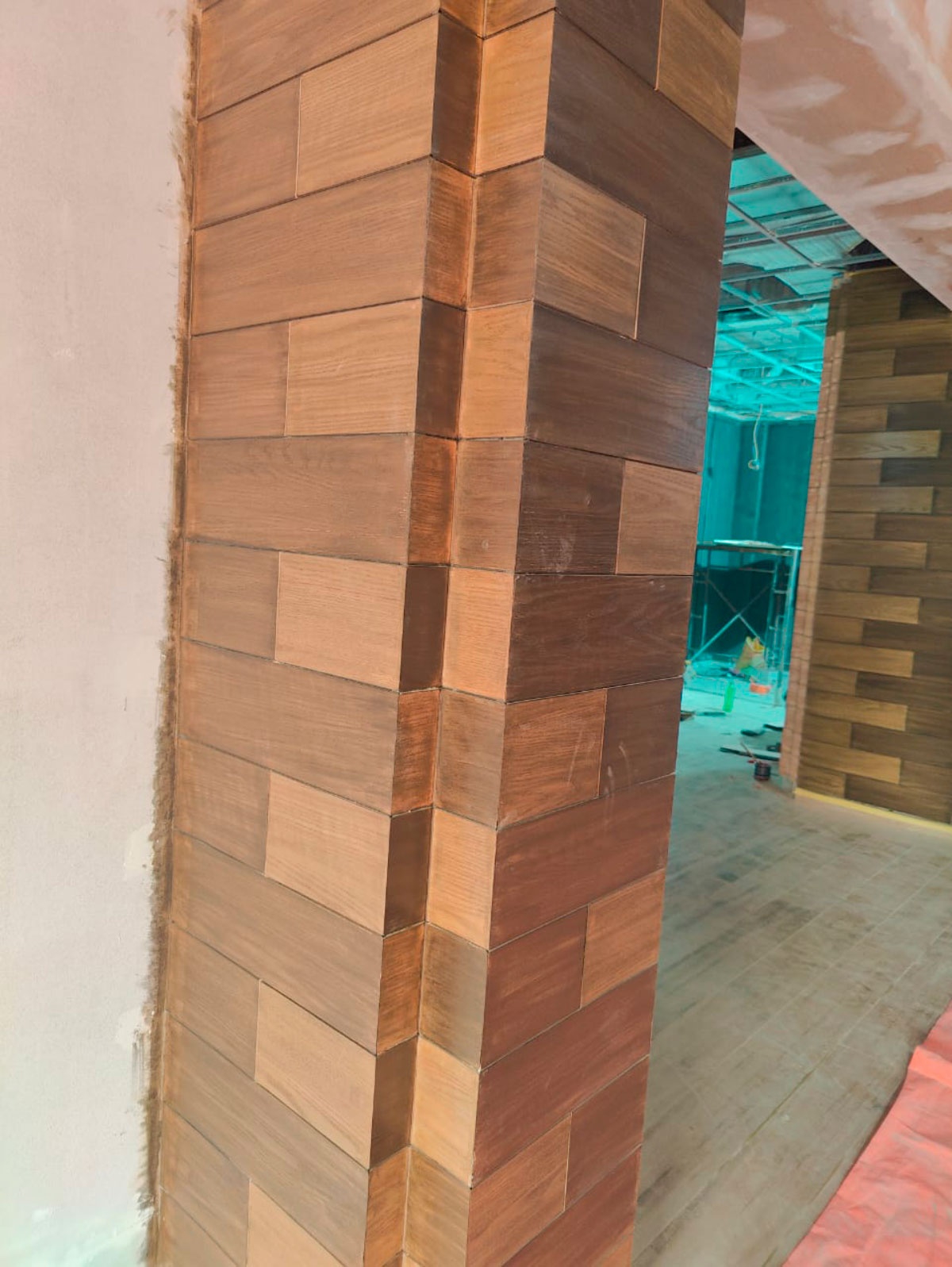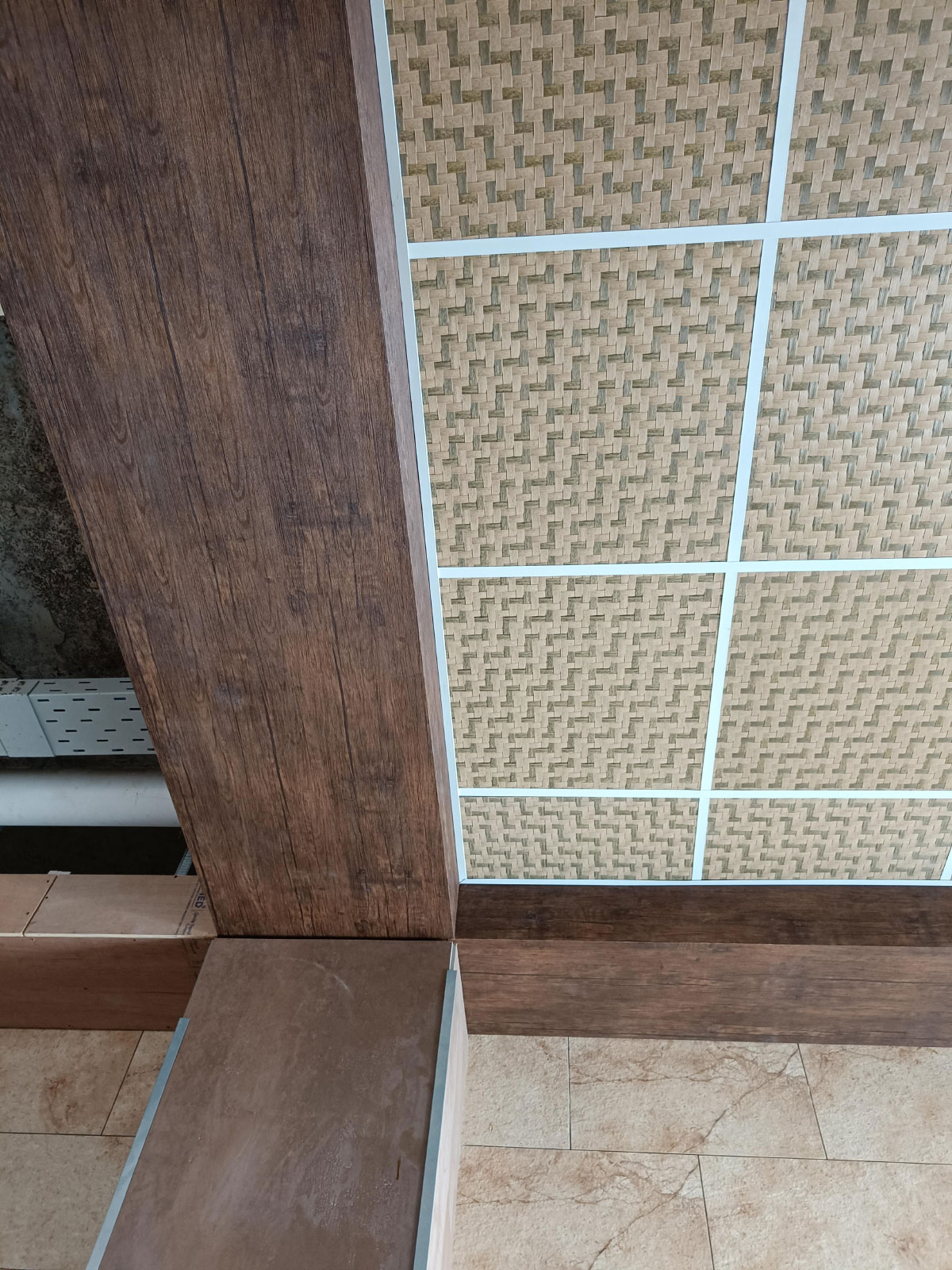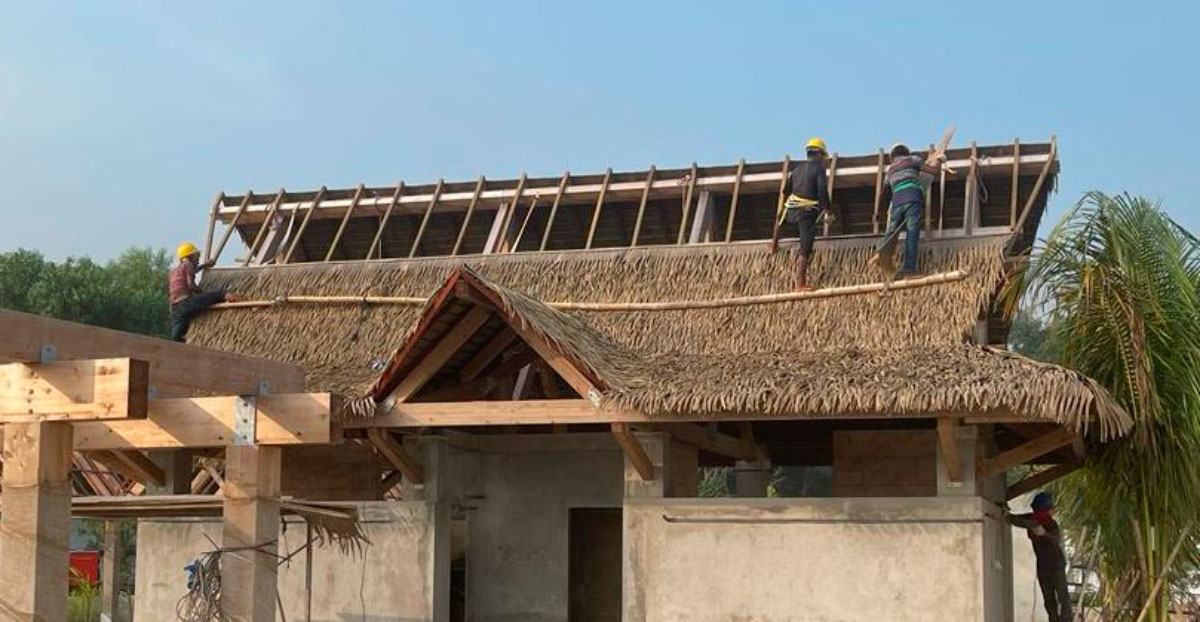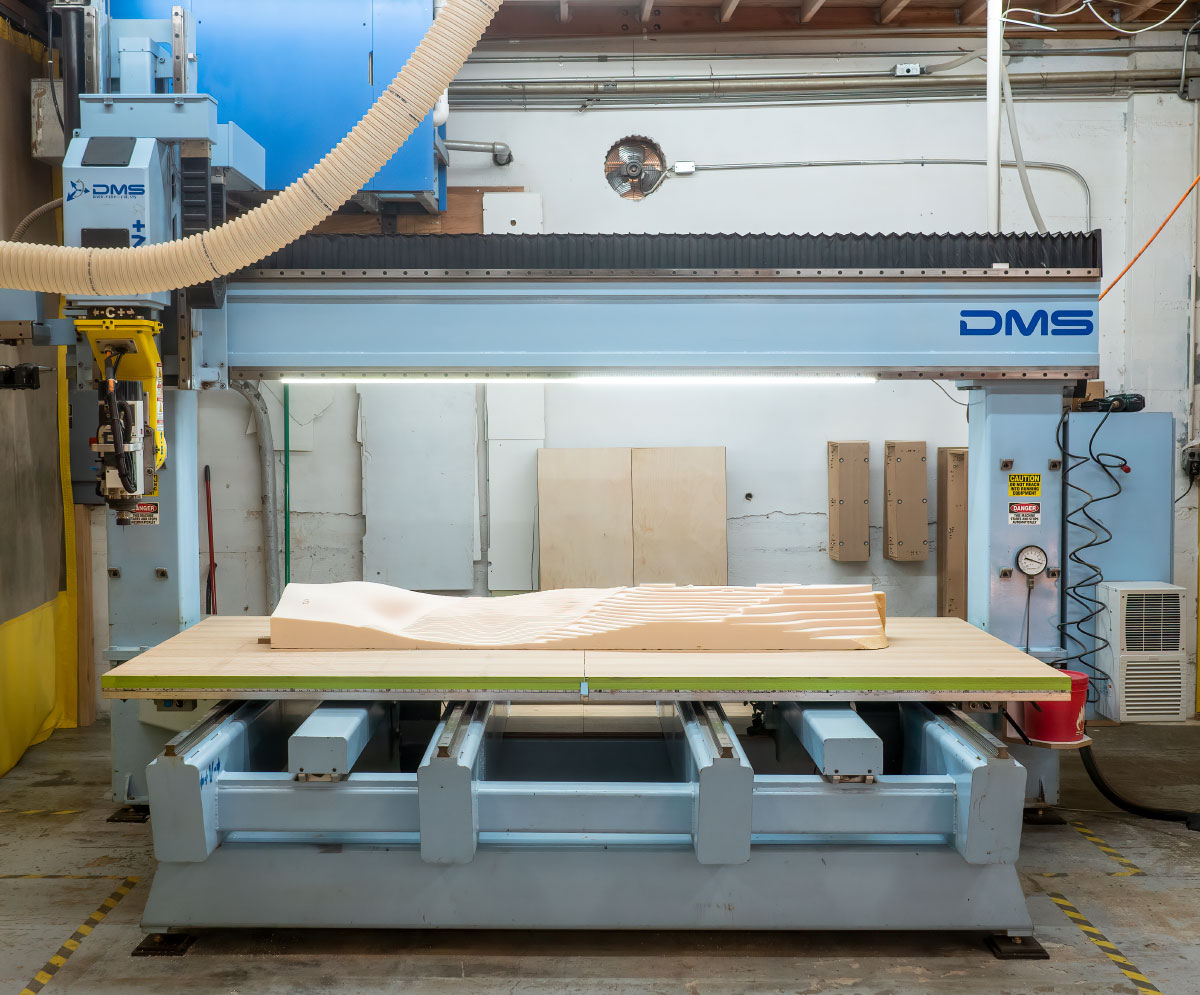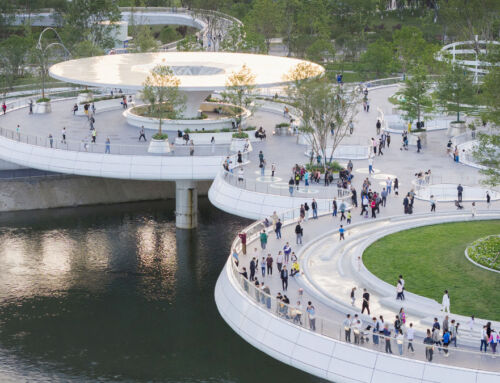Theme parks often transport visitors through time and space, without sacrificing the technical demands of our century. In this sense, theming is a discipline that combines historical rigour with innovative construction. Whether it is Victorian London or the Mayan empire, medieval France or a Japanese village, modern solutions are now available.
How to simulate stone in theming
The Stone Face technique is used to simulate historical walls. Using thixotropic mortars – materials that solidify after application – we can recreate the irregular texture of ancient stone without its weight and fragility. Under these mortars, layers of thermal insulation and waterproofing perform functions that medieval stonemasons never dreamed of.
How to simulate wood in theming
The beams supporting a medieval castle or the planks of a drawbridge must look like they are centuries old. Special moulds and high-strength resins are used to recreate the grain of the wood, without its weaknesses against insects, humidity or UV rays. In cases where real wood is necessary – as in walkways or pergolas – state-of-the-art treatments are applied to it, making it almost imperishable.
How to simulate roofs in theming
A thatched hut may look fragile, as in the Middle Ages, but beneath its rustic appearance lie Teflon (polytetrafluoroethylene) membranes that repel water better than any historic fabric. These covers, fixed or in movable parasols, combine synthetic fibres treated to mimic everything from African reeds to Polynesian palm fronds.
How to simulate props and props in theming
Items such as ropes, tools, barrels, etc., are often key parts of immersive theming. Thanks to large-scale 3D printing and CNC (Computer Numerical Control) cutting, we can produce objects that look hand-carved, each with calculated imperfections that convey authenticity. In the case of the ropes, polypropylene replaces the fragile natural fibre. This material retains the look of raffia but withstands decades of intensive use.
Beyond appearance in theming
In today’s theming, what appears artisanal is technically impeccable; what evokes tradition hides innovation. For example, a wall that simulates irregular stone could integrate invisible drainage systems; or a wooden beam that looks like a testimony of centuries could house seismic-resistant reinforcements inside. The question is to build scenarios that are plausible and yet of impeccable safety.
By Miquel Solís, senior architect in the Architecture Department of Amusement Logic


